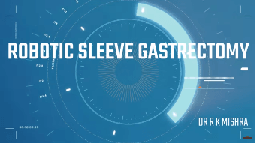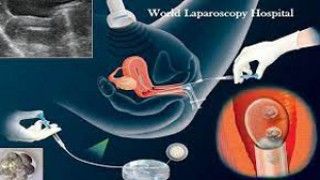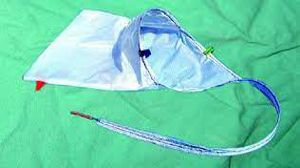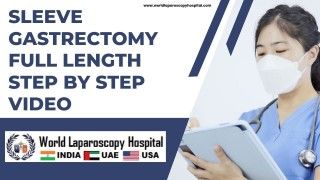Mastering Single Instrument Dissection in Laparoscopic Incisional Hernia Repair
Add to
Share
861 views
Report
1 year ago
Description
Introduction: In the realm of surgical advancements, the field of hernia repair has witnessed remarkable progress, offering innovative techniques that optimize patient outcomes and surgical efficiency. Among these pioneering approaches is the single instrument dissection in laparoscopic incisional hernia repair, a procedure that streamlines the surgical process and provides numerous benefits for both surgeons and patients. This essay explores the significance of mastering single instrument dissection in laparoscopic incisional hernia repair, highlighting its role in streamlining the procedure and improving surgical outcomes. Understanding Laparoscopic Incisional Hernia Repair: Laparoscopic incisional hernia repair is a minimally invasive surgical technique used to treat hernias that occur at the site of a previous surgical incision. The procedure involves the insertion of a laparoscope and specialized instruments through small incisions, allowing the surgeon to repair the hernia using mesh reinforcement. Traditionally, this procedure required multiple instruments for dissection, which increased the complexity and potential for surgical complications. Streamlining the Procedure with Single Instrument Dissection: The advent of single instrument dissection in laparoscopic incisional hernia repair represents a significant breakthrough in the field of hernia surgery. By utilizing a single instrument for dissection, surgeons can streamline the procedure, reducing the number of instrument exchanges and minimizing the risk of complications associated with multiple instrument handling. This approach allows for more precise dissection, improved visualization, and enhanced control over the surgical site. Mastering Single Instrument Dissection: Mastering the technique of single instrument dissection in laparoscopic incisional hernia repair requires expertise, precision, and a deep understanding of anatomy. Surgeons who have honed their skills in this technique exhibit exceptional manual dexterity and a comprehensive knowledge of the patient's hernia anatomy. By meticulously navigating through the layers of tissue using a single instrument, these surgeons can effectively dissect and prepare the hernia defect for mesh placement with unparalleled accuracy. Benefits for Surgeons and Patients: The mastery of single instrument dissection in laparoscopic incisional hernia repair offers numerous advantages for both surgeons and patients. For surgeons, it enhances surgical efficiency by reducing instrument exchanges and simplifying the dissection process, resulting in shorter operating times. Additionally, this technique minimizes the risk of complications associated with instrument handling, improving overall surgical safety. For patients, the streamlined procedure translates to reduced surgical trauma, faster recovery, and minimal scarring, leading to improved post-operative outcomes and enhanced quality of life. Advancing the Field of Hernia Surgery: The mastery of single instrument dissection in laparoscopic incisional hernia repair represents a significant advancement in the field of hernia surgery. Surgeons who embrace and refine this technique contribute to the ongoing evolution of surgical excellence. By continually exploring and perfecting minimally invasive approaches, these surgeons enhance patient care, optimize surgical outcomes, and shape the future of hernia repair. Collaboration and Training: The successful implementation of single instrument dissection in laparoscopic incisional hernia repair relies on collaboration and training. Surgeons who have mastered this technique play a vital role in sharing their knowledge and experience through training programs, mentorship, and educational platforms. By fostering a culture of continuous learning and skill development, they empower future surgeons to embrace innovative approaches, streamline surgical procedures, and elevate the standard of hernia repair. The single instrument dissection technique in laparoscopic incisional hernia repair has revolutionized the field of hernia surgery, offering a streamlined approach that enhances surgical efficiency and optimizes patient outcomes. This innovative procedure involves utilizing a single instrument for dissection, eliminating the need for multiple instrument exchanges and reducing the risk of complications. Surgeons who have mastered this technique demonstrate exceptional skills, precise dissection abilities, and a comprehensive understanding of hernia anatomy. By streamlining the surgical process, single instrument dissection in laparoscopic incisional hernia repair ensures faster recovery, minimal scarring, and improved post-operative outcomes for patients. This approach represents a significant advancement in hernia surgery and underscores the commitment of surgeons to continually refine their skills and provide optimal care to their patients. Conclusion: Mastering single instrument dissection in laparoscopic incisional hernia repair is a significant advancement in the field of hernia surgery. By streamlining the procedure, this technique enhances surgical efficiency, improves patient outcomes, and minimizes complications associated with instrument handling. Surgeons who embrace and refine this technique contribute to the ongoing evolution of hernia repair, ensuring that patients receive the highest standard of care, safety, and surgical excellence.
Similar Videos






